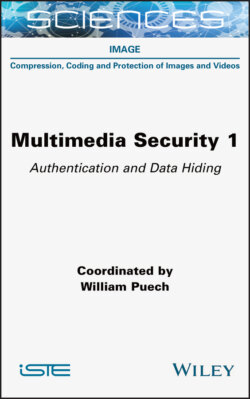Читать книгу Multimedia Security, Volume 1 - William Puech - Страница 32
1.4.1. Forgery detection through demosaicing analysis
ОглавлениеDetecting demosaicing artifacts can answer two questions:
– Is it possible that a given image was obtained with a given device?
– Is there a region of the image whose demosaicing traces are inconsistent with the rest of the image?
Two different approaches can be used to study the demosaicing of an image. One could try to estimate the specific demosaicing algorithm that was used in the image. Such an estimation might prove that an image was not taken by a given camera, assuming the demosaicing method is different from the one used by the camera. Within an image itself, a region that was demosaiced differently than the global image is likely to be forged. Such an analysis could be justified by the large variety of demosaicing methods, however this variety also limits the potential detection. To establish or disprove the link between an image and a camera through the demosaicing algorithm would require us to know the algorithm used, which is rarely the case. Estimating the specific demosaicing algorithm used by a camera would require a large amount of images from said cameras; while theoretically possible, no such work has ever been attempted. The ability to detect regions of an image that have been demosaiced with a different algorithm than the rest of the image is only theoretical; in practice the estimation of a demosaicing method once again requires more data than can usually be provided by a small region of an image. Furthermore, most demosaicing algorithms do not interpolate all regions in the same way. As a consequence, a reliable comparison of two estimations is difficult, as the same algorithm may have interpolated two regions differently. That being said, global learning-based methods can make use of the demosaicing algorithm to get information on an image, although this is just one feature learned and used among others, and not something that is conclusive by itself. For instance, Siamese-like networks such as Noiseprint (Cozzolino and Verdoliva 2020) implicitly learn some information on the demosaicing algorithm to detect forgeries. These methods will be presented in more detail in section 1.7.
A more promising approach is to directly detect the position of the Bayer matrix. Indeed, while the CFA pattern is almost always a Bayer matrix, the exact position of the matrix, that is, the offset of the CFA, varies. Detecting the position of the matrix therefore has two uses:
– we can compare the position of the Bayer matrix in the image to the one normally used by a specific device. If the positions do not correspond, then the image was either not taken by that device, or it was cropped in the processing;
– in the case of copy-move, both internal and external (splicing), there is a probability that the position of the Bayer matrix does not correspond between the original image and the pasted region. Therefore, detecting the position of the Bayer matrix, both globally and locally, can be used to find inconsistencies.
Most current demosaicing detection methods focus on this second idea, as local CFA inconsistencies give useful information on the image and can be found relatively easily in ideal conditions, that is, in uncompressed images, as we will now present.
